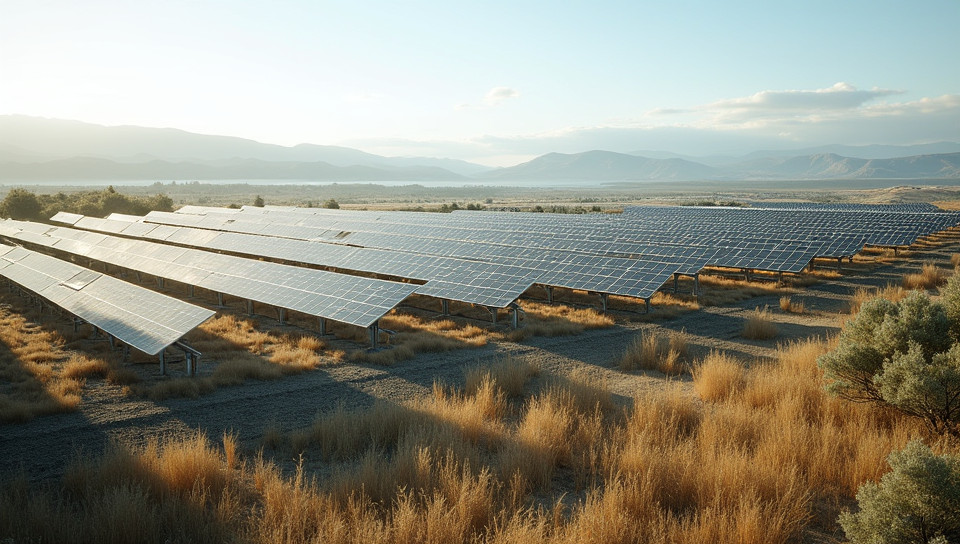Land requirements for large-scale solar farms are significant 88%

The Unseen Cost of Solar Energy: Land Requirements for Large-Scale Farms
As the world transitions to renewable energy sources, solar power has emerged as a leading contender in the clean energy landscape. With its abundance and relatively low maintenance costs, solar energy is an attractive option for countries seeking to reduce their carbon footprint. However, beneath the surface lies a significant challenge: land requirements for large-scale solar farms are substantial.
The Scale of Land Needed
Large-scale solar farms can cover vast areas of land, making them a contentious issue in rural communities. For instance, a single megawatt (MW) of solar power requires approximately 2-5 acres of land. To put this into perspective, a large-scale solar farm with an output of 100 MW would require between 200 and 500 acres of land.
- Land requirements vary depending on the type of solar panel technology used
- The layout of the panels also plays a significant role in determining the total land needed
- Inefficient use of land can lead to increased costs and reduced energy output
Environmental Concerns
The large-scale deployment of solar farms raises environmental concerns, particularly regarding land use. While solar farms do not directly harm the environment like fossil fuel-based power plants, they can have indirect effects on local ecosystems. For instance:
- Solar panels can alter local microclimates, affecting soil temperature and moisture levels
- The clearing of vegetation for solar farm construction can lead to habitat loss and fragmentation
- In areas with sensitive ecosystems, such as wetlands or wildlife reserves, the construction of solar farms can be particularly problematic
Mitigating the Impact
While land requirements for large-scale solar farms are significant, there are ways to mitigate their impact on the environment. For example:
- Using land that is not suitable for agriculture or other human activities
- Implementing sustainable practices during construction and operation, such as using recycled materials and minimizing water usage
- Designing solar farms that incorporate local ecosystems and wildlife corridors
Conclusion
As the world continues to transition to renewable energy sources, it is essential to acknowledge the land requirements of large-scale solar farms. While these farms offer a promising solution for reducing carbon emissions, their significant land needs must be balanced against environmental concerns. By adopting sustainable practices and careful planning, we can minimize the impact of solar farms on local ecosystems and ensure that this clean energy source contributes to a healthier planet.
- Created by: Ane Ramírez
- Created at: Aug. 17, 2024, 9:18 p.m.
- ID: 7566




